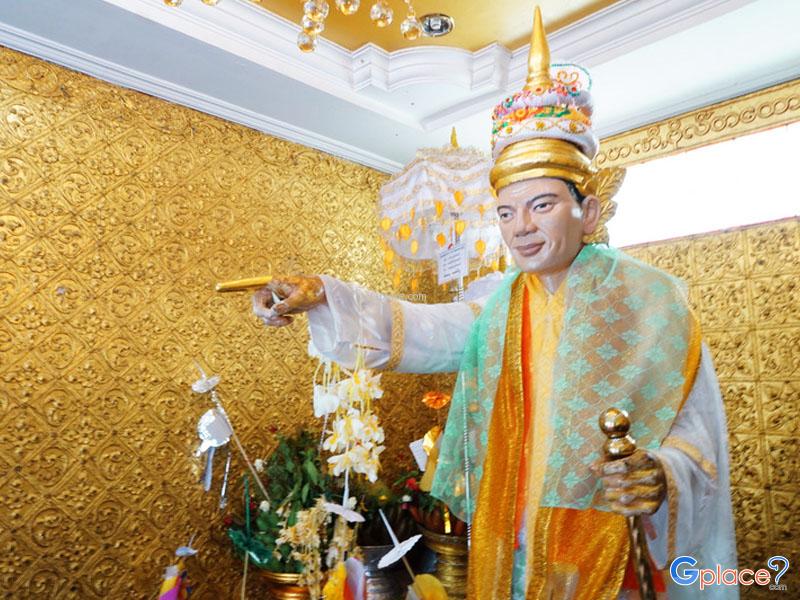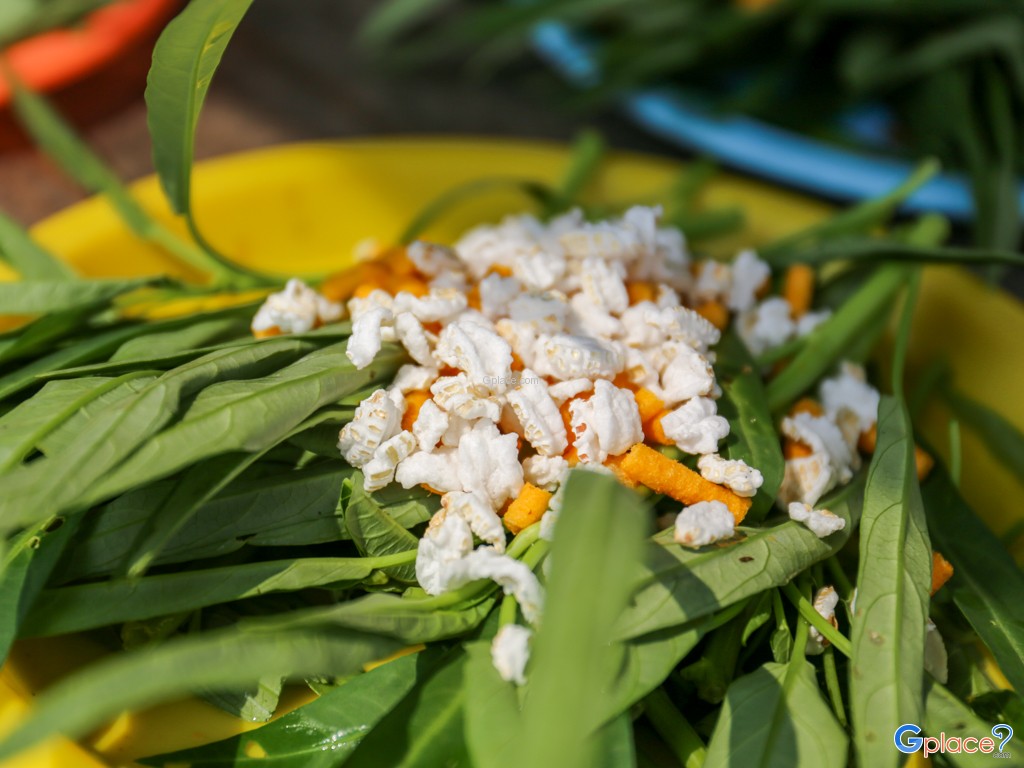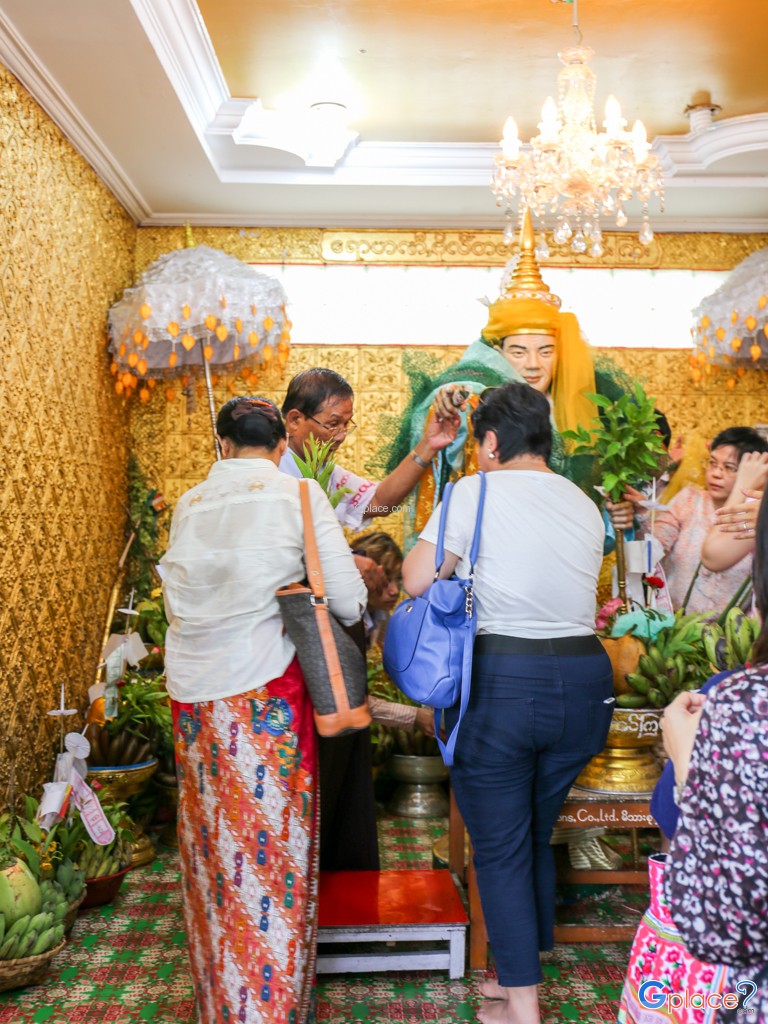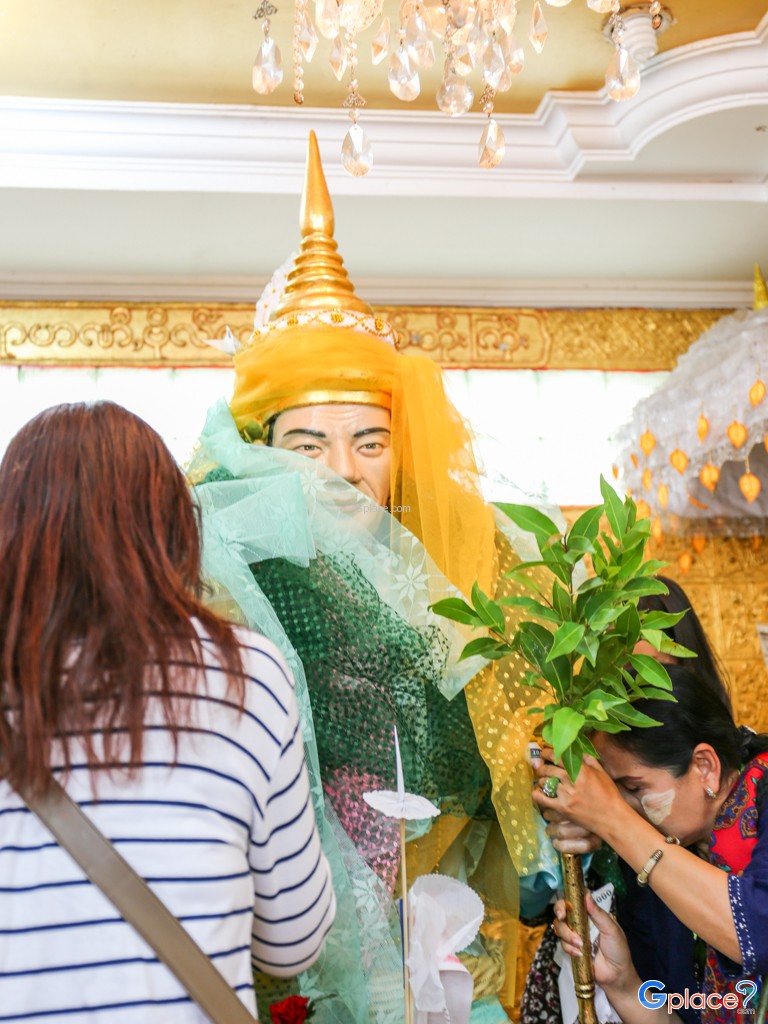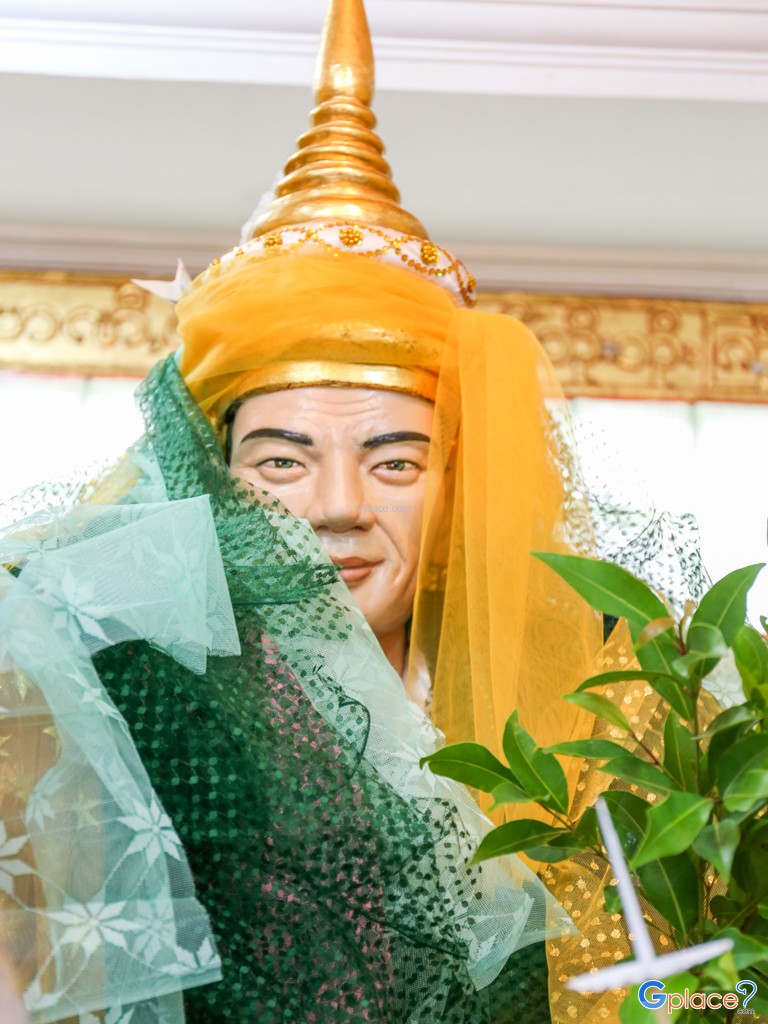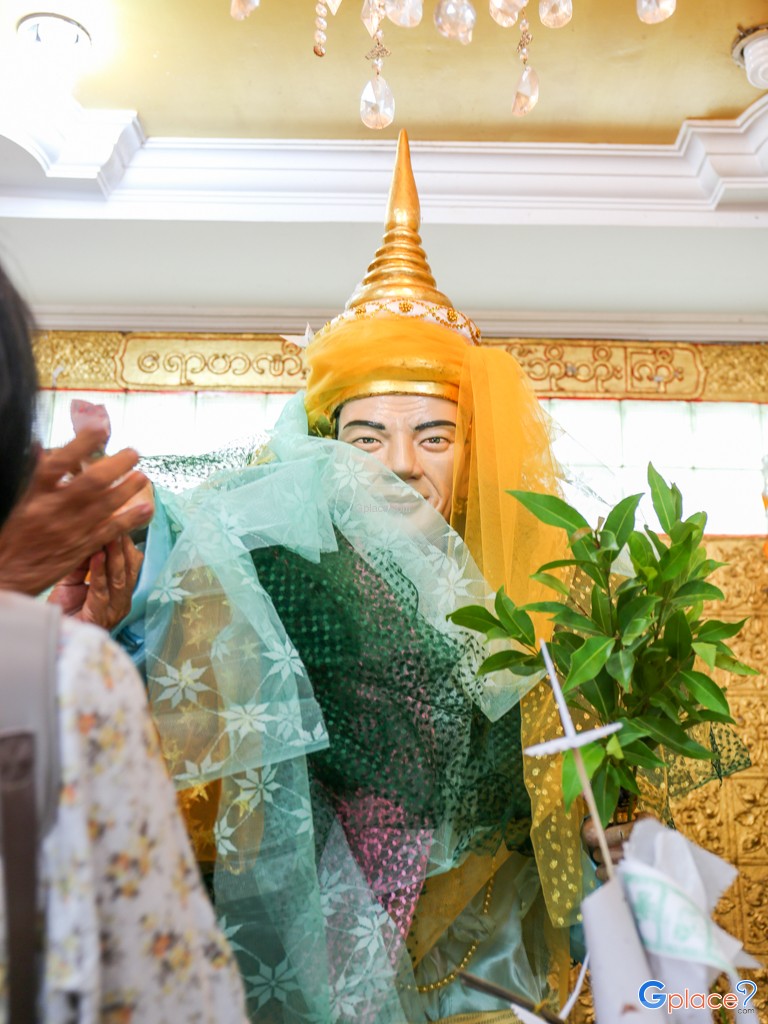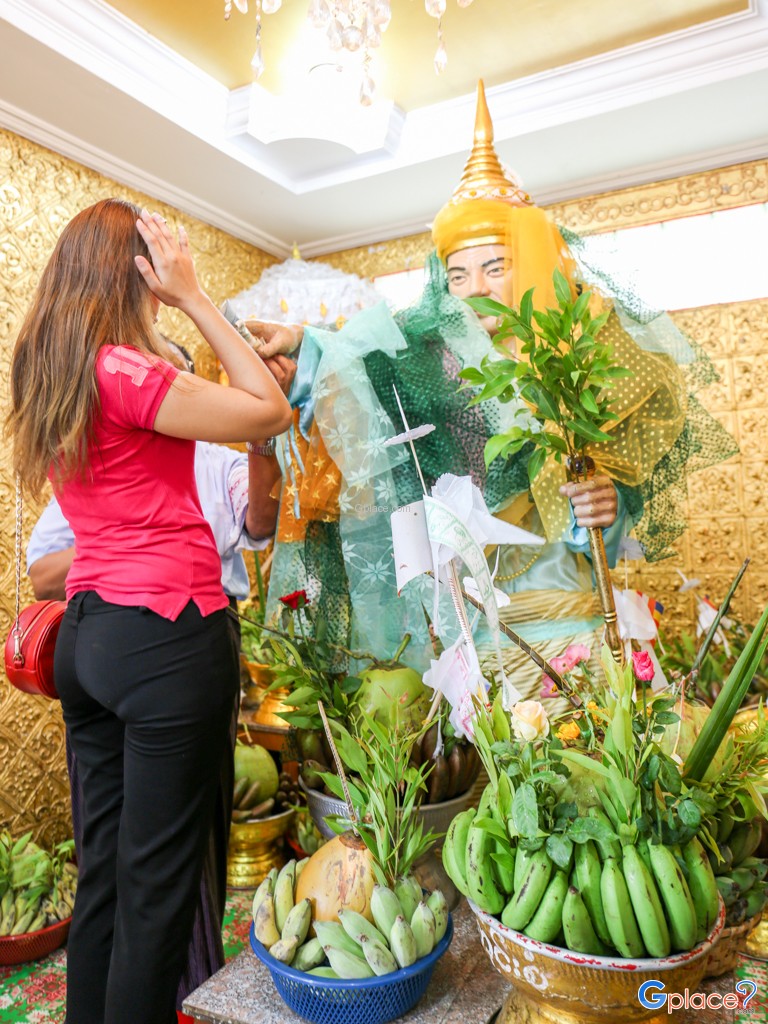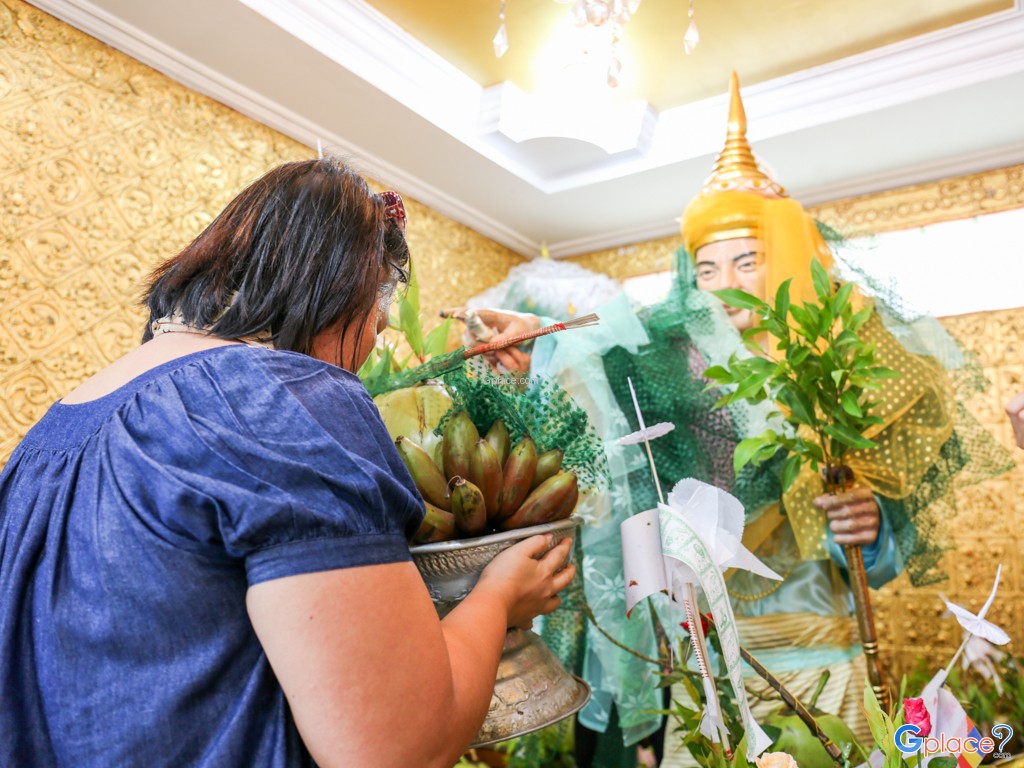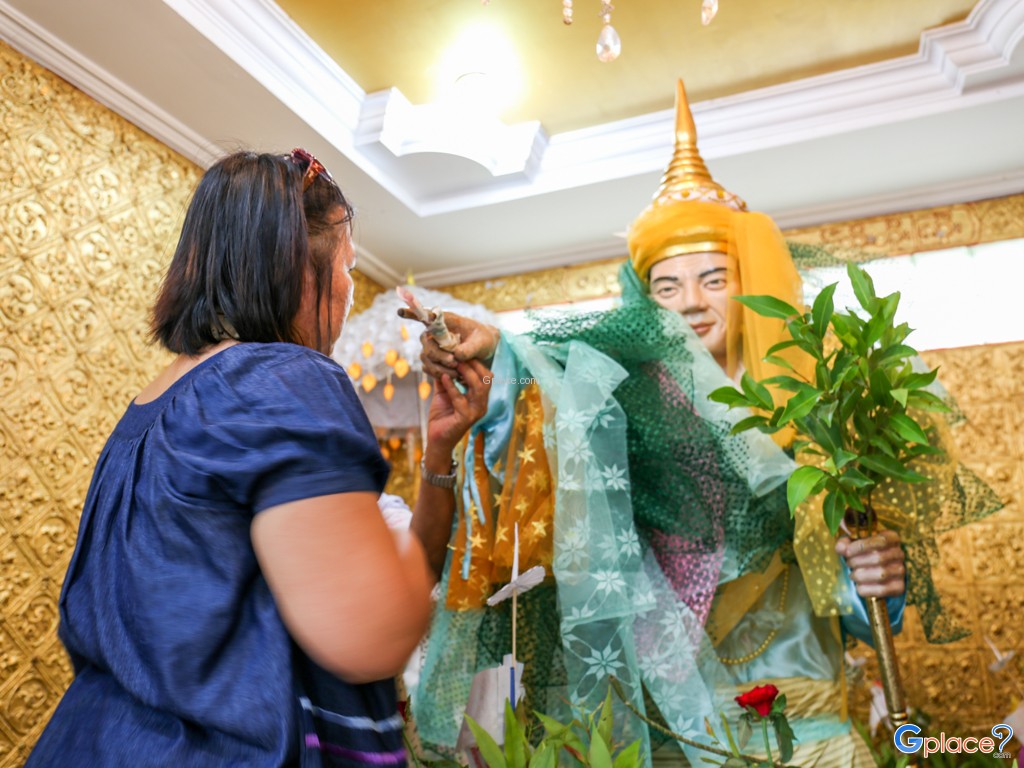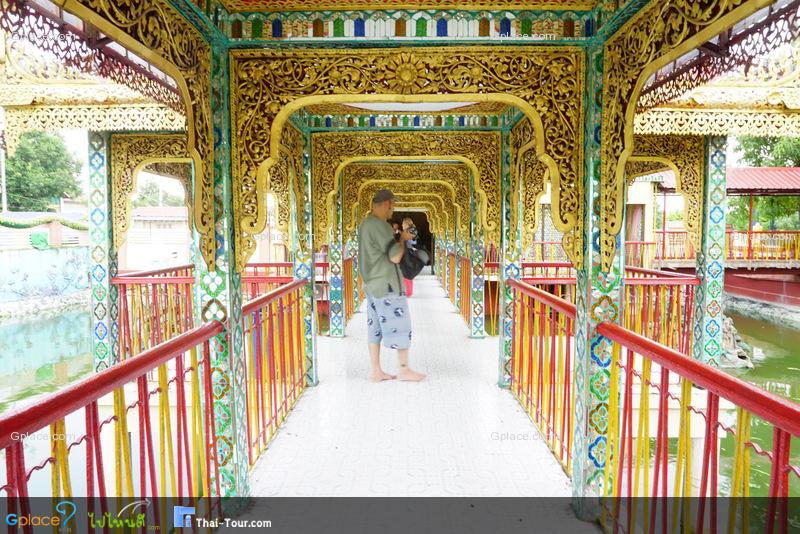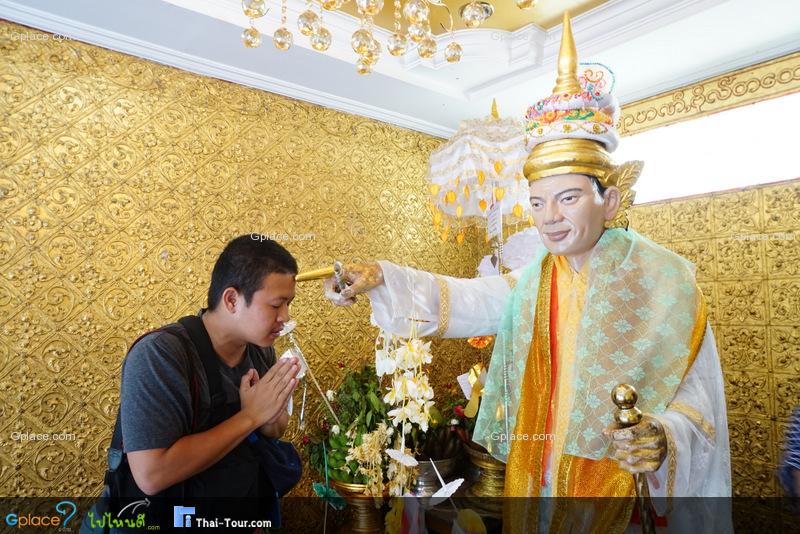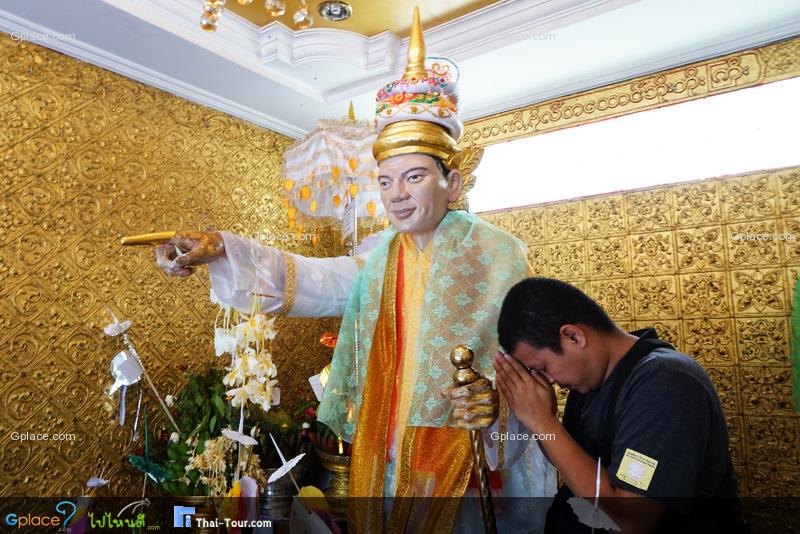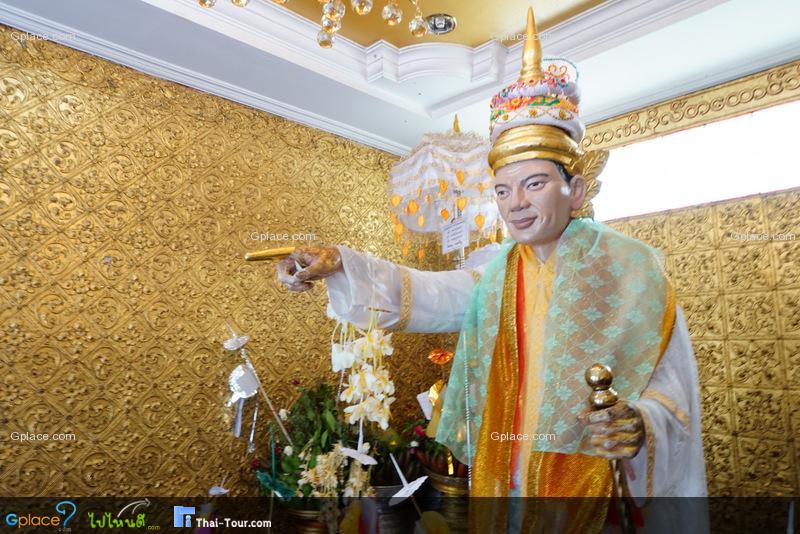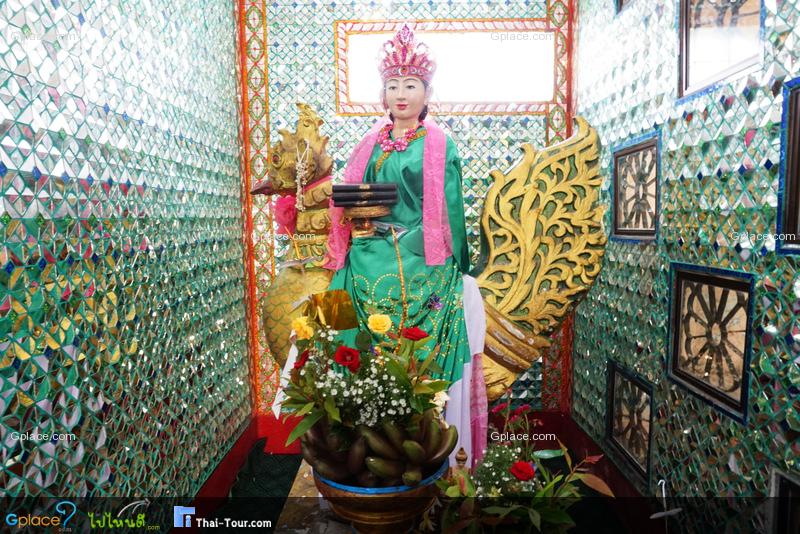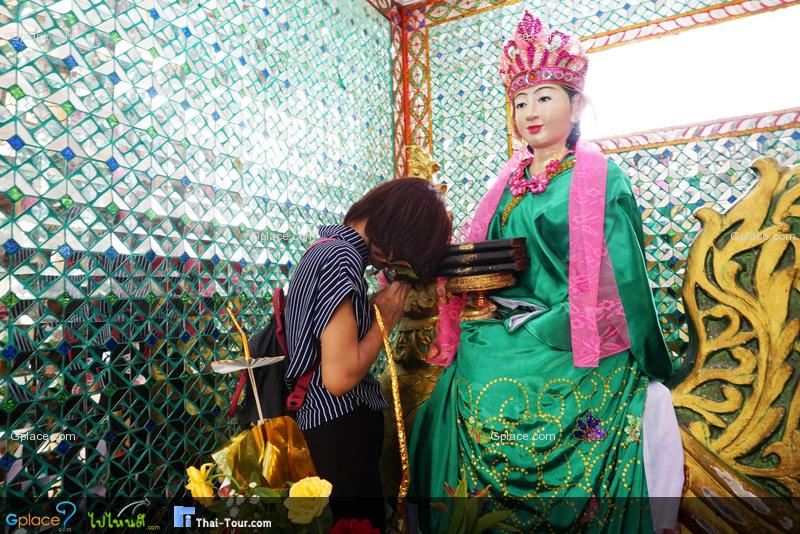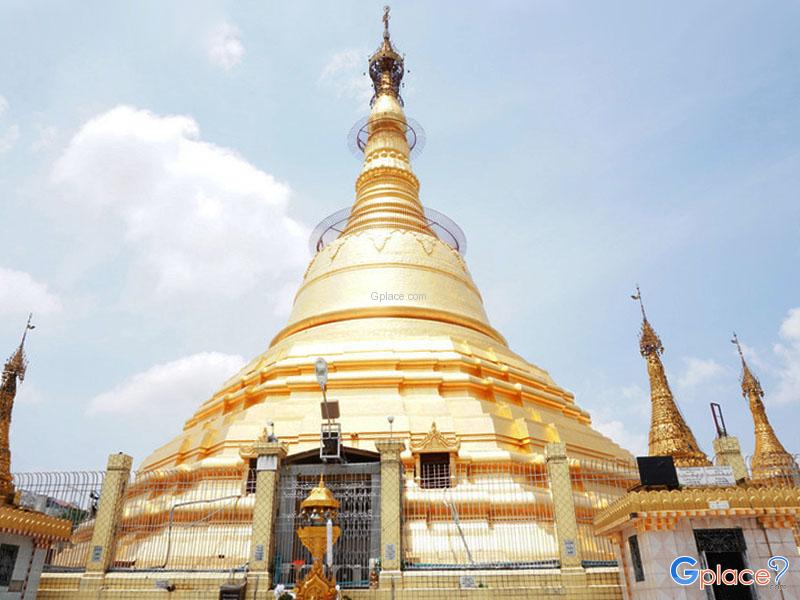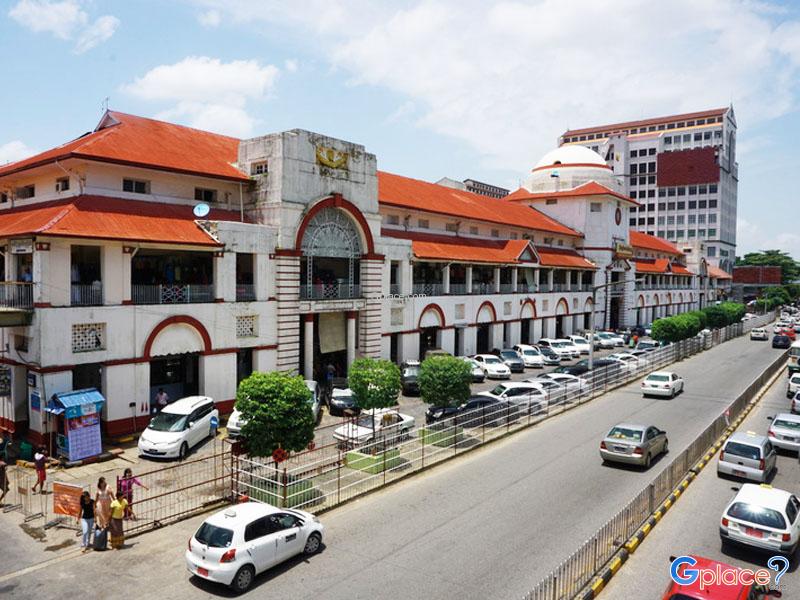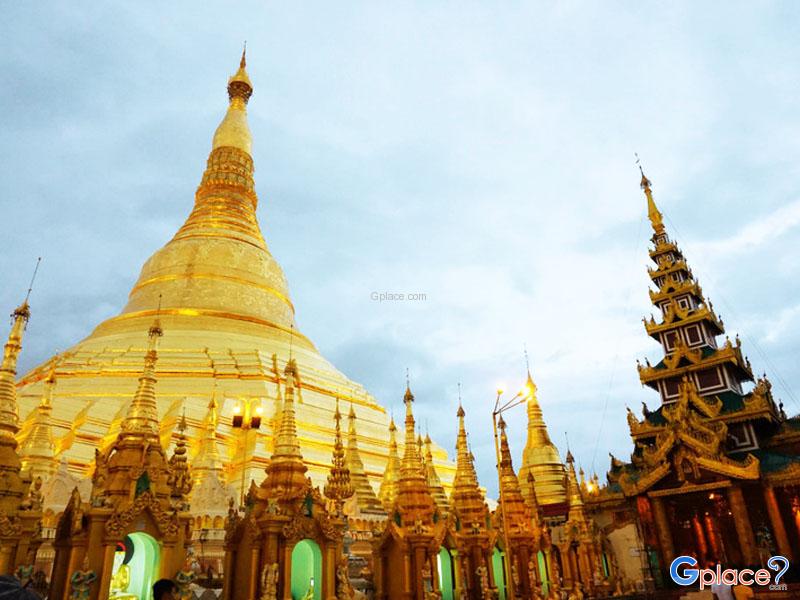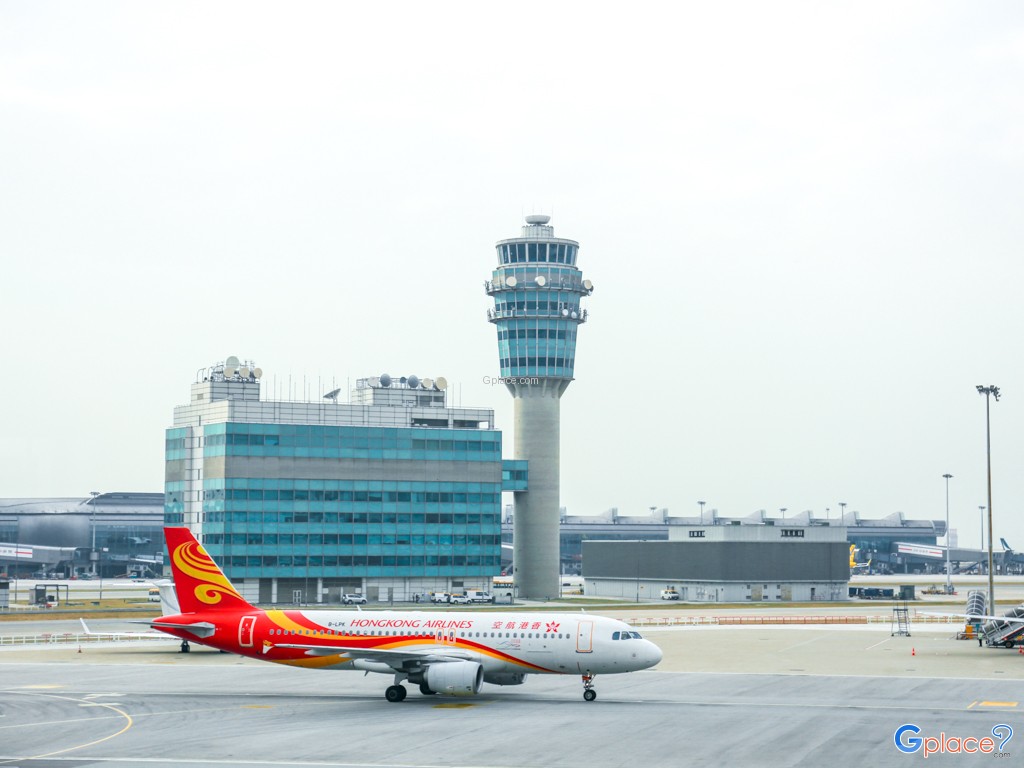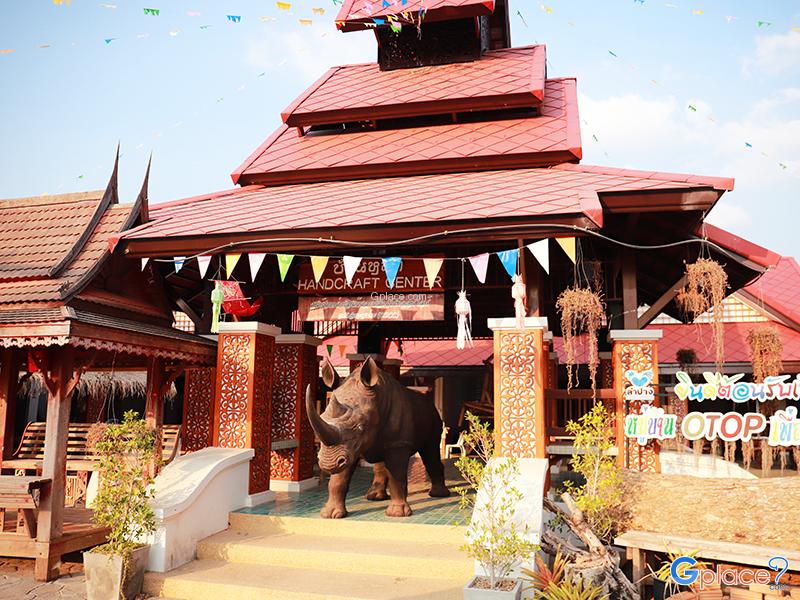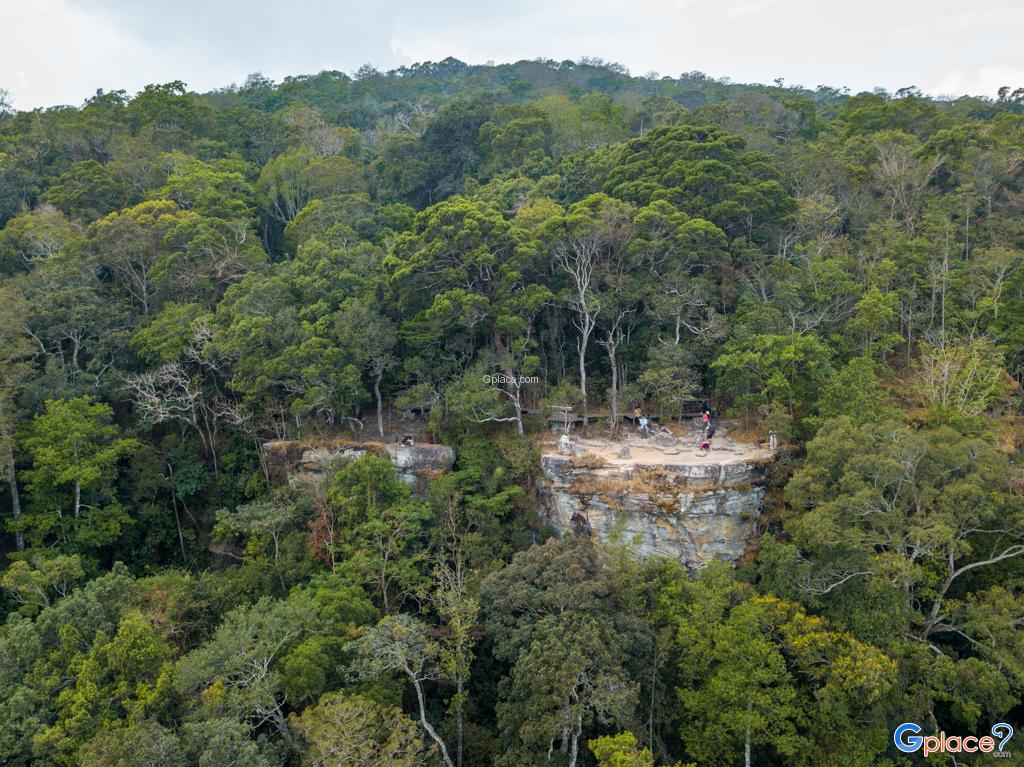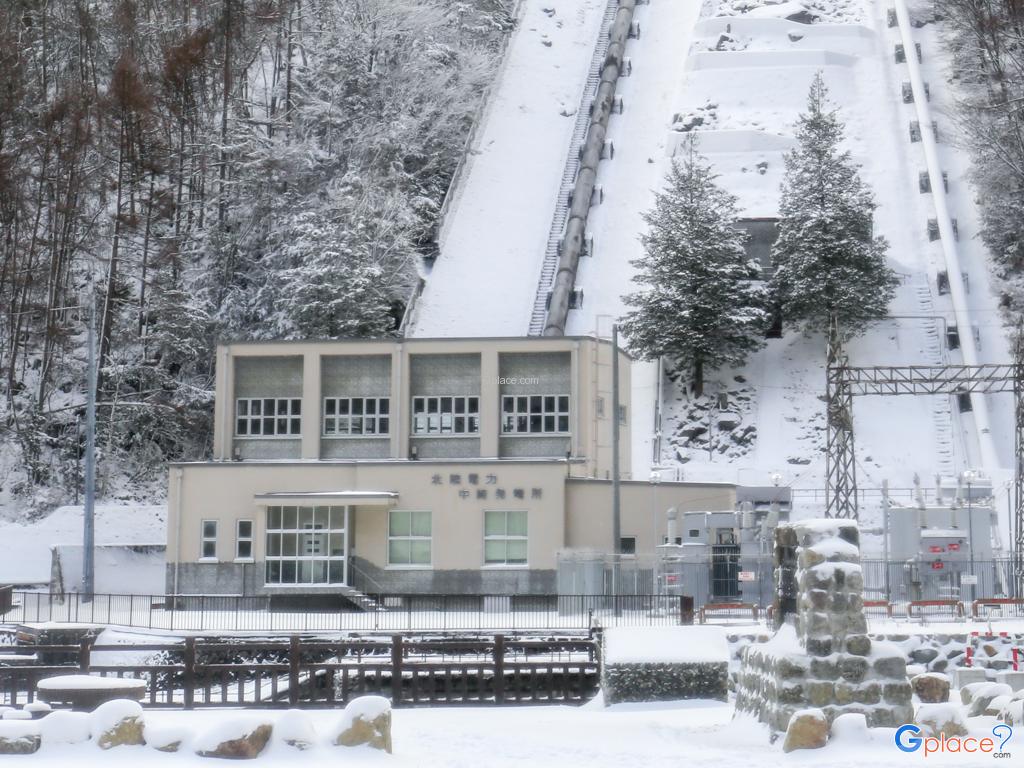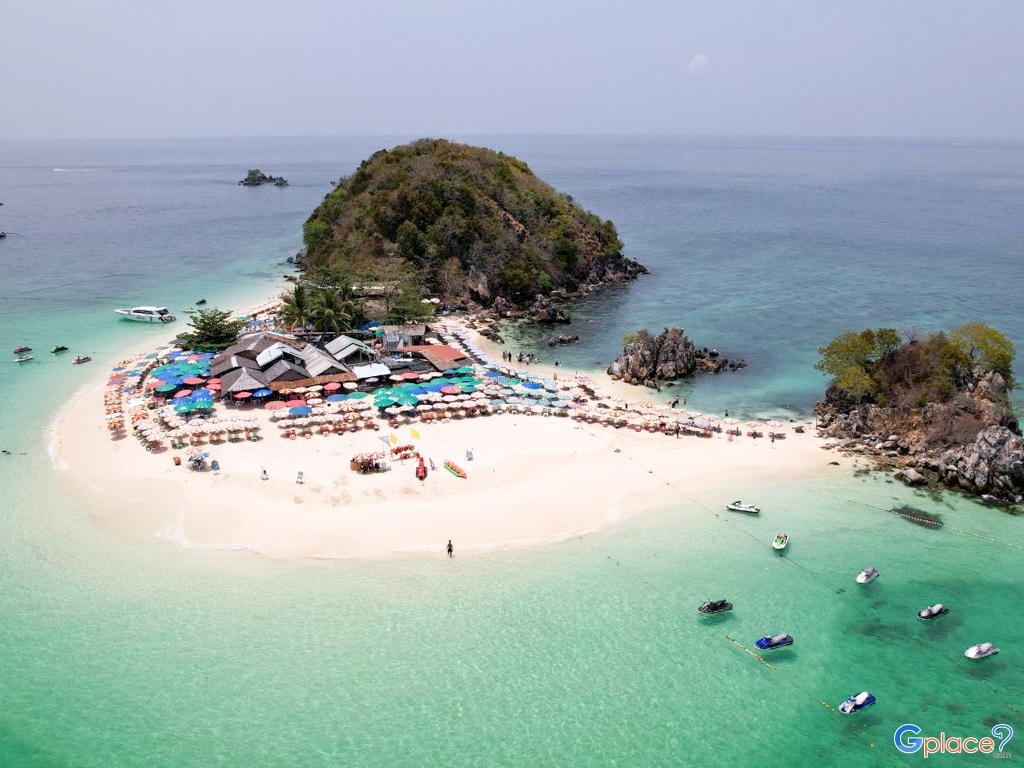“if you pray believed to be successful”
Botahtaung Pagoda
Legend has it that several of Buddha’s remains, brought over from India 2,500 years ago and deposited here on the river bank, were guarded by a thousand soldiers, thus lending the name ‘Botahtaung’ which means ‘one thousand generals.’ During World War II, the original structure was bombed but was rebuilt in 1956 to its present-day height_ of 48 metres.
The road in front of the shrine beckons visitors in with its colourful array of shops selling fruits, flowers and other offerings items. Enter the main entrance on the right and marvel at the gleaming hall covered in gold (leaf). from here, turn left and follow the narrow circular walkway laced with dazzling glass mosaic. Halfway through the labyrinth is the centrepiece glass case with the Buddha hair.
Outside the Pagoda to the west, a small building houses a splendid specimen of a Mandalay-style Buddha image seated on a bejewelled throne. Nan-oo, as it is known here, was taken by the British in the 1885 and exhibited at the Victoria and Albert Museum. Only in 1951 was it returned to the people of Myanmar.There is a large pond with fish and turtles feeding on popcorns, which is on sale conveniently nearby. A covered bridge leads visitors to a shrine of a few resident Nats (guardian spirits) who cast their protective sight over the temple grounds. The Nats, who form an important part of most religious monuments in Myanmar, can allegedly grant wishes and fulfil dreams. Nats are said to be fond of young coconuts and bananas. Offerings in the form of money are widely practiced.
There is a monastery across the road from the main Pagoda providing a glimpse into the temple life. A short stroll from here is the jetty where visitors can observe life along the Yangon waterway.
To everyday
Charge in traffic




